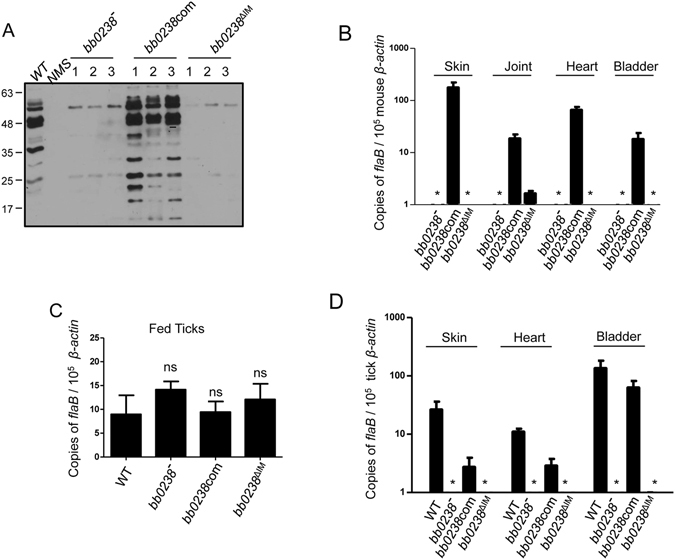Figure 5.

Deletion of the 11-residues of BB0238 that interact with BB0323 impaired spirochete ability to persist in mice or their transmission from infected ticks to naïve hosts. (A) Mice (3 animals/group) were infected with bb0238 mutant (bb0238−), bb0238 complement (bb0238com) and bb0238 ∆IM complement (bb0238∆IM) spirochetes. Sera collected 2 weeks post inoculation was used to screen for immunoblot of B. burgdorferi cell lysate. NMS denotes normal mouse sera, used as a control. (B) Spirochete burdens in infected mice were assessed by qRT-PCR, by measuring copies of B. burgdorferi flab gene normalized to mouse β-actin levels in skin, joint, heart and bladder. Error bars represent mean standard errors from three independent experiments. (C) Ticks were microinjected with equal numbers of wildtype (WT), bb0238 mutant, bb0238 complement, or bb0238 ∆IM complemented B. burgdorferi and allowed to engorge on mice (3 animals per group). Spirochete burdens in fully engorged ticks (C) and different mice tissues (D) were analyzed with qRT-PCR after 2 weeks of infection by measuring copies of flaB normalized against tick or mouse β-actin respectively. Asterisks indicate undetectable levels of bb0238 mutant and bb0238 ∆IM complement. Statistical significance of differences were analyzed using GraphPad Prism v5. One- or two-tailed Student’s t tests were used to compare the mean values, and p < 0.05 was considered statistically significant.
